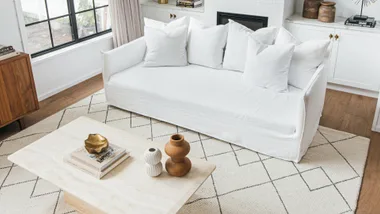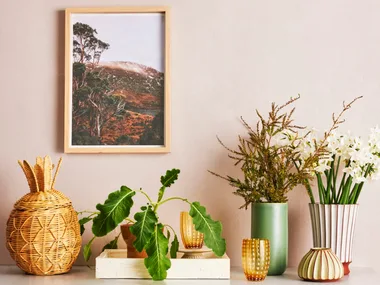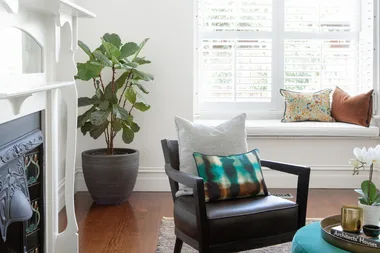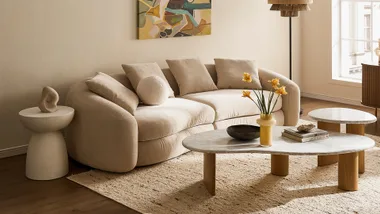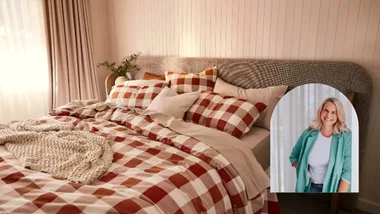A go-to guide for going green from Thomas Archer Homes interior stylist.
Consider how far to stretch your budget… and environmental footprint
Sustainable pieces for the living room can be surprisingly friendly – not just to the environment but also to the wallet. Spend a little time looking into which homewares and furniture companies are socially responsible. You may be pleased to discover that some of the more budget-friendly retailers are also taking a lead in environmental accountability. For example, the H&M group, one of the world’s largest users of organic cotton and recycled polyester, bans chemicals considered hazardous for use in the production process.
Think upcycling. “Before you throw out that old coffee table, look for ways to give it a face lift and bring it back to life,” says interior stylist Aimee. As for investing in sustainable big-ticket items such as sofas, armchairs and dining chairs, King Living’s Triana Odone advises choosing pieces that will stand the test of time. “The integrity of the frame is important – frames made of steel are of higher quality and are more durable, meaning they will last through the years, creating less wastage.” Also consider sofas that incorporate clever built-in storage options. “They’re incredibly space saving and multi-functional, which ultimately allows areas to be used more efficiently without the need to increase the physical footprint,” she says.
“In many cases, old pieces of furniture might just need a good sand and some TLC”
Aimee Tarulli, Interior Stylist
Aimee’s top five tips:
- Upcycle anything and everything. To get the best results, look for a solid timber item that’s still in reasonable condition.
- If you’re renovating or doing a new build, work with the orientation of your block to allow the maximum amount of light through the home. This will reduce the need for artificial lighting during the day.
- Shop locally to support boutiques and makers.
- Look for vintage pieces, especially things like one-off vases and smaller furniture items, online or at second-hand shops.
- Do your research. Purchase decorative items like soft furnishings that have minimal packaging and that have been made using fair-trade practices.
For more eco friendly ideas click here.
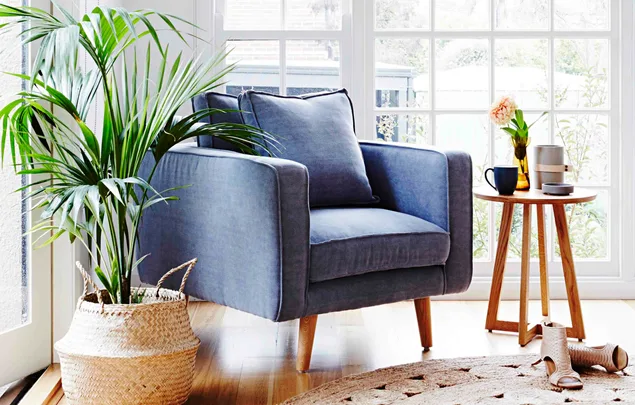 Annette O'Brien
Annette O'Brien
